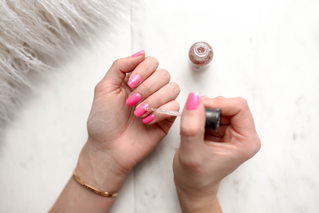 On September 1, 2025, the European Union enacted a sweeping ban on TPO—trimethylbenzoyl diphenylphosphine oxide—a key photo initiator used in many gel nail polish formulations, citing potential carcinogenic, mutagenic, and reproductive toxicity concerns (classified as CMR 1B) based on animal studies. The regulation prohibits the sale, use, and even possession of TPO-containing cosmetics in all EU member states (and countries aligned like Norway and Switzerland), with no grace period for retailers or salons to liquidate existing stock.
On September 1, 2025, the European Union enacted a sweeping ban on TPO—trimethylbenzoyl diphenylphosphine oxide—a key photo initiator used in many gel nail polish formulations, citing potential carcinogenic, mutagenic, and reproductive toxicity concerns (classified as CMR 1B) based on animal studies. The regulation prohibits the sale, use, and even possession of TPO-containing cosmetics in all EU member states (and countries aligned like Norway and Switzerland), with no grace period for retailers or salons to liquidate existing stock.
What This Means for Personal Care Chemists and Manufacturers
1. Urgent Reformulation Imperatives
Brands are now compelled to reformulate gel polish lines to exclude TPO immediately. Alternatives such as TPO-L or other photo initiators are being rapidly adopted to deliver the same UV/LED curing performance without regulatory risk.
2. Supply Chain Realignment
Manufacturers operating across global markets may choose a single, TPO-free global formulation to manage complexity and compliance. U.S. brands could be forced to follow suit due to distribution ties with European operations.
3. Potential Regulatory Ripple Effect
The EU’s precautionary approach could influence other markets. U.S. regulators, industry watchdog groups, or state-level authorities might start weighing similar actions, or brands might preemptively adjust formulations to cater to shifting consumer demands for safer beauty products.
4. Economic and Operational Disruption
Beauty salons and distributors in the EU are facing abrupt compliance demands, with some industry players—especially smaller businesses—arguing that the ban lacks scientific consensus and causes economic strain.
Access compliance data that helps you drive smart business decisions and manage product compliance across your entire retail ecosystem, at all stages, for every UPC, learn more here!
5. A Strategic Opportunity for Innovation
This seismic shift opens the door for photo initiator innovation. Chemists can experiment with safer alternatives that maintain product performance while delivering stronger marketing narratives around health and transparency. Brands that pivot quickly may gain a reputational edge.
Key Insights for Industry Stakeholders
| Stakeholder | Implications & Actions |
|---|---|
| Chemists/Formulators | Identify TPO alternatives; test performance and UV cure integrity; ensure regulatory compliance in global markets. |
| Manufacturers | Reformulate inventory; communicate timelines to partners; migrate all product lines toward safer chemical platforms. |
| Suppliers | Supply alternative photo initiators; support technical validation; offer regulatory support and training. |
| Regulatory Affairs Teams | Monitor EU precedent for broader policy shifts; evaluate implications for product registration in other jurisdictions. |
Final Thoughts
While the EU’s gel nail polish ban centers solely on TPO, not the practice of gel manicures themselves, its implications stretch far beyond Europe. The personal care industry—particularly chemists, manufacturers, and raw material suppliers—now must reimagine formulations, supply chains, and compliance roadmaps. Companies that act decisively stand to gain consumer trust and regulatory resilience. The gel polish revolution continues—but with safer, smarter chemistry leading the way.
Resources
- Cosmetics Business
- People.com
- The Independent
- Kittennail.com
- Manucurist US
- euronews
- Cosmetics Business
The views, opinions and technical analyses presented here are those of the author or advertiser, and are not necessarily those of ULProspector.com or UL Solutions. The appearance of this content in the UL Prospector Knowledge Center does not constitute an endorsement by UL Solutions or its affiliates.
All content is subject to copyright and may not be reproduced without prior authorization from UL Solutions or the content author.
The content has been made available for informational and educational purposes only. While the editors of this site may verify the accuracy of its content from time to time, we assume no responsibility for errors made by the author, editorial staff or any other contributor.
UL Solutions does not make any representations or warranties with respect to the accuracy, applicability, fitness or completeness of the content. UL Solutions does not warrant the performance, effectiveness or applicability of sites listed or linked to in any content.
